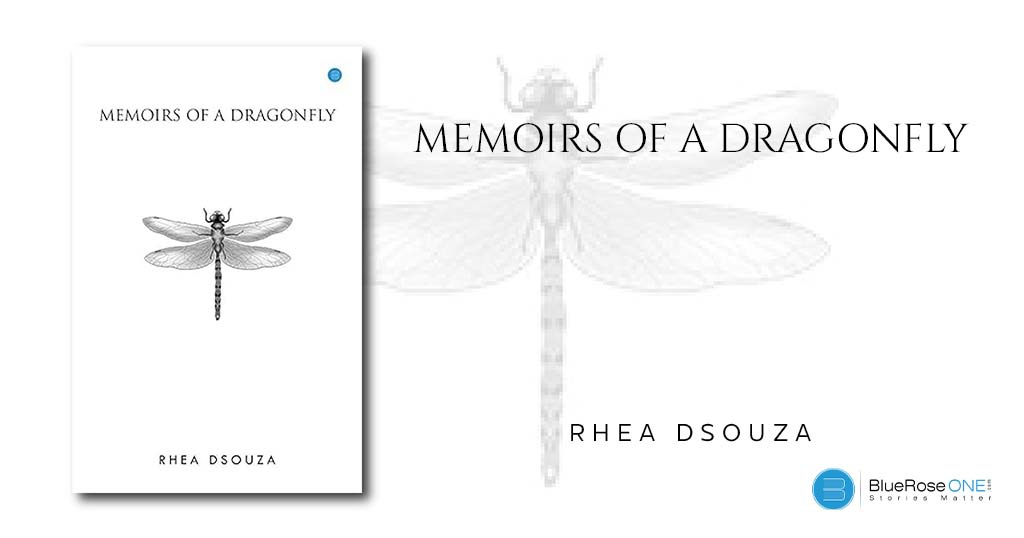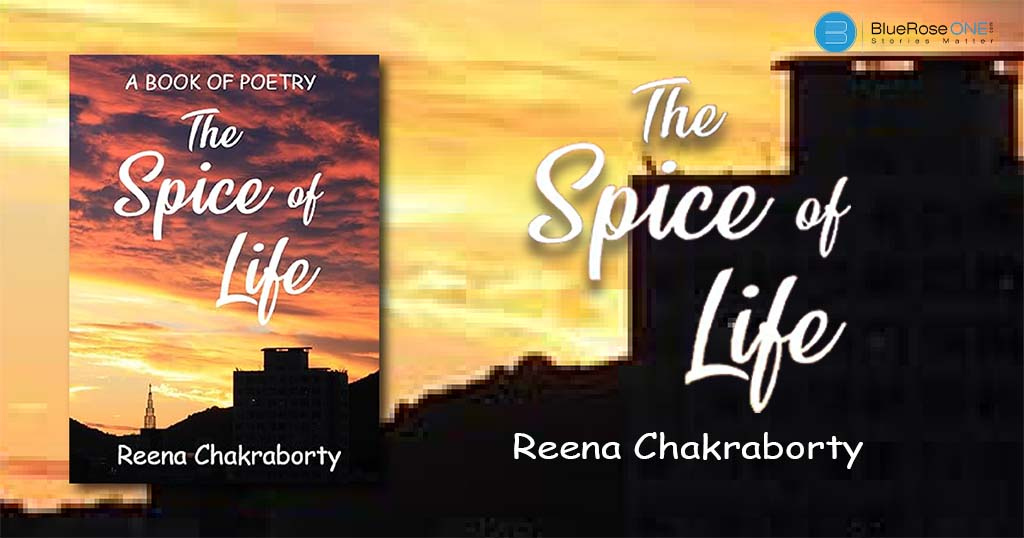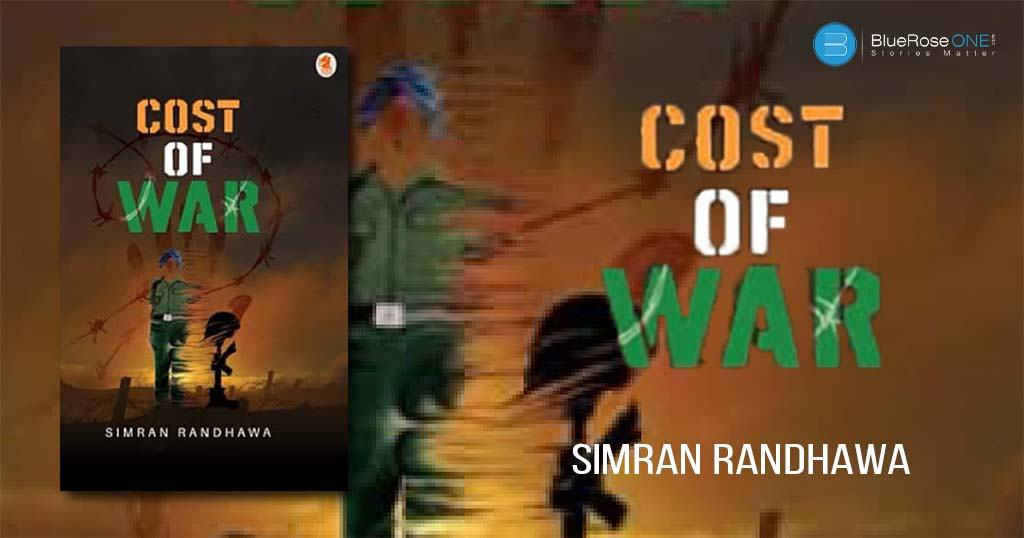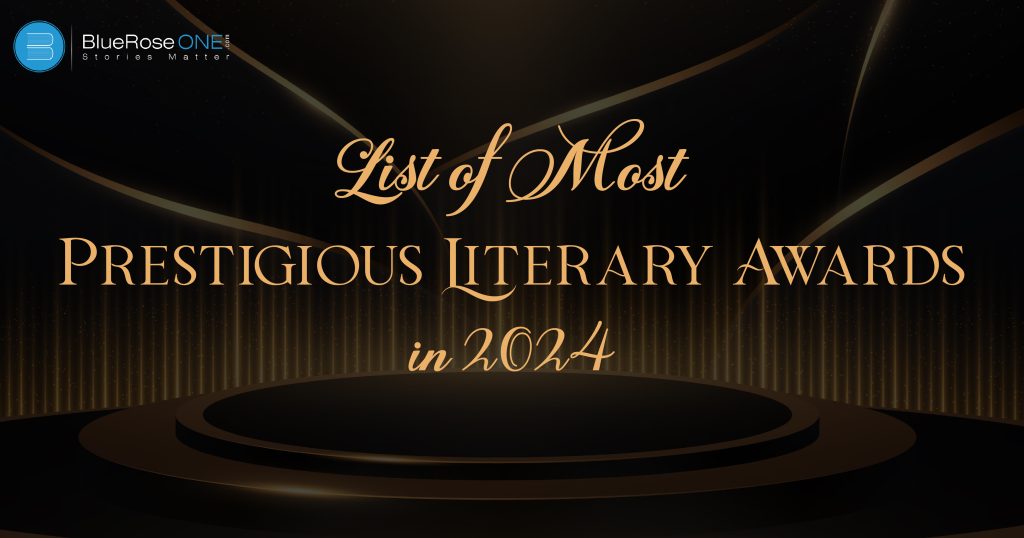
List of 15 Prestigious Literary Awards in 2024
A literary award is an award given in celebration of a highly appreciated literary work or body of work. It is usually given to an author. Most prestigious literary awards are accompanied by an award ceremony. Read: Book Cover Design: How to beautify your Book Cover Design. Many prestigious literary awards have one organisation (usually a non-profit organisation) as the presenter and public face of the award, and another organisation as the financial sponsor or backer, who pays the prize remuneration as well as the cost of the ceremony and public relations, typically a corporate sponsor who may sometimes attach their name to the award (such as the Orange Prize). List of 10 Most Prestigious Literary Awards- Nobel Prize in Literature Man Booker Prize Pulitzer Prize for Fiction National Book Award Baileys Women’s Prize for Fiction International Dublin Literary Award Hugo Award Edgar Allan Poe Awards Costa Book Awards Women’s Prize for Fiction Neustadt International Prize for Literature The Writer’s Prize Goodreads Choice Awards The Orwell Prize Nebula Awards 1. Nobel Prize in Literature The Swedish Academy bestows the prestigious international Nobel Prize in Literature on a yearly basis. It was founded in 1901 and is regarded as the highest accolade in the literary community, given to writers who have achieved remarkable success. This esteemed award is a component of the wider Nobel Prize programme, which honours exceptional accomplishments across multiple fields. The Swedish Academy, which is made up of writers, linguists, and scholars, scrutinises applications closely. With their wide range of genres, the laureates demonstrate the influence that literature has on political, social, and cultural domains around the world. The Nobel Prize in Literature honours the universal ability of narrative to sculpt and impact cultures, in addition to recognising particular literary brilliance. You may also like: 10 Magical Books That Combine Christmas and Fantasy Nobel prize in literature – Popular literary awards in 2024 2. Man Booker Prize Established in 1969, the Man Booker Prize is a prestigious literary award meant to honour the best in contemporary English-language fiction. With a particular focus on books released in the UK or Ireland, the prize has had a significant impact on the development of literature. The Man Booker Prize is well-known for its stringent selection procedure, which looks for books with outstanding narrative, inventive language, and profound themes. The award has helped writers achieve success in their literary careers by propelling them to recognition on a global scale over the years. Its importance goes beyond literary circles, impacting readers’ decisions and adding to the appreciation of English-language literature around the world. You may also read: List of Nobel Peace Prize Winners in India You may also like: 150+ Positive Words That Start with O to Brighten Your Vocabulary Man Booker Prize – Best literary awards in 2024 3. Pulitzer Prize for Fiction The Pulitzer Prize for Fiction, one of the prestigious literary awards is Pulitzer Prizes, is a well-known prestigious literary award in the American literary community. This prize was established in 1917 with the express purpose of recognising exceptional literature written by Americans. Novels that not only exhibit literary brilliance but also advance knowledge of modern American life are honoured with the Pulitzer Prize for Fiction. The winning novels, which are chosen after a rigorous evaluation procedure by a team of distinguished jurors, frequently tackle important societal issues, provide a range of viewpoints, and exhibit a mastery of narrative craft. A writer’s ability to craft gripping narratives and provide deep understanding of the intricacies of the human condition is greatly validated by winning the Pulitzer Prize for Fiction. You may also like: Is Kindle Direct Publishing right for Your Next Book? Pulitzer Prize for Fiction – Notable literary awards in 2024 4. National Book Award The National Book Foundation, a non-profit dedicated to honouring and advancing American literature, established the National Book Award in 1950. It is a highly regarded literary honour. This prize, which honours outstanding works in poetry, fiction, nonfiction, and young people’s writing, is highly regarded in American literary culture. The National Book Award provides a forum for celebrating and elevating American writers’ voices and their contributions to the country’s literary legacy. The prize finds and honours exceptional literary works that speak to the rich and changing fabric of American culture through a strict selection procedure that involves panels of esteemed judges. You may also like: How to Publish a Book? | Publish Your Book | BlueRoseOne You may also like: Archangels Names List: Meanings, Powers, and Symbolism National Book Award – Nobel literary awards in 2024 5. Women’s Prize for Fiction- Established in 1996, the Baileys Women’s Prize for Fiction is evidence of the recognition and celebration of the contributions made by women to the field of literature. The goal of this worldwide literary award is to honour women writers of English from all around the world for their outstanding, innovative, and approachable works. In addition to providing a forum for celebrating individual accomplishments, the prize hopes to advance a more widespread awareness and appreciation of women’s voices in literature. The Baileys Women’s Prize for Fiction fosters a more dynamic and inclusive literary landscape by showcasing a range of perspectives and storylines, making a vital contribution to the current discourse on gender equality and representation within the literary arena. You may also like: The Digital Libraries: Exploring the World of Reading Books Women’s Prize for Fiction – High-profile literary awards in 2024 6. International Dublin Literary Award A famous international literary award, the International Dublin Literary Award was founded in 1996 and is given out every year to a novel written in English or translated into the language. This award, which is given out by Dublin City Council, stands out for its global reach, accepting submissions from writers all around the world. The prize highlights the universal attraction of stories that cut beyond linguistic and cultural barriers and acknowledges the significant influence of literature on a worldwide scale. By means of an extensive assessment procedure that involves a varied group of…
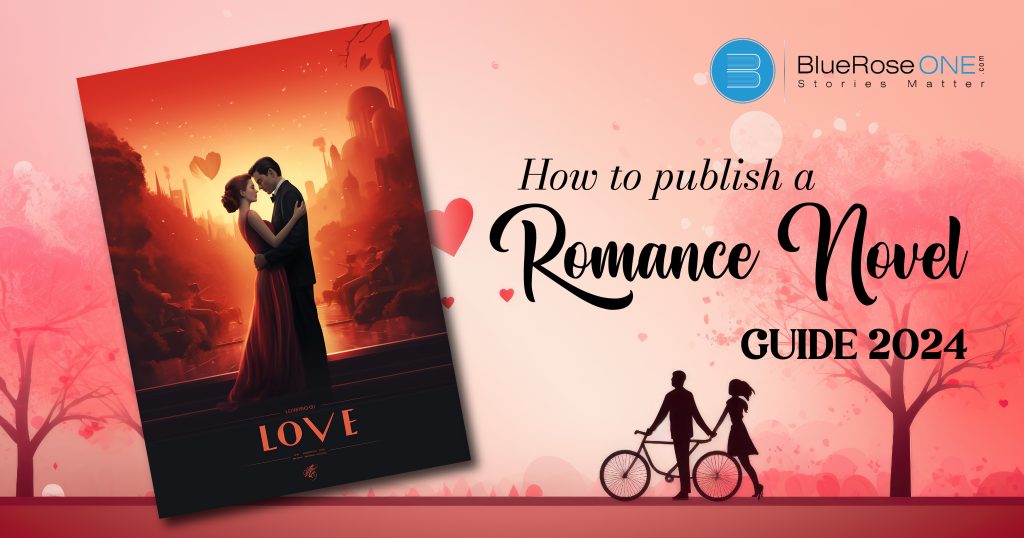
Romance Novel complete publishing guide in 2024
Introduction: The world of romance literature is a vast and captivating realm, and if you’ve penned a love story that you’re eager to share with the world, 2024 offers numerous opportunities in the publishing landscape. In this guide, we’ll explore the step-by-step process to publish a romance novel, covering everything from crafting a compelling manuscript to marketing your book effectively. I. Crafting Your Romance Novel Masterpiece: You may also like: Top 10 Best Biographies of All Time II. Preparing for Publication: You may also like: The Rise of Self Publishing and What it means for Authors III. Choosing Your Publishing Path: You may also like: The importance of professional editing in Self-Publishing IV. Marketing Your Romance Novel: You may also like: Insights from Best Selling Authors: The art of storytelling Conclusion: Publishing a romance novel in 2024 is an exciting endeavour filled with opportunities for success. By combining a captivating story with a strategic approach to publishing and marketing, you can navigate the literary seas and bring your love story to the eager hands of readers around the world. Embrace the journey, stay persistent, and let your passion for storytelling shine through every page of your romance novel.
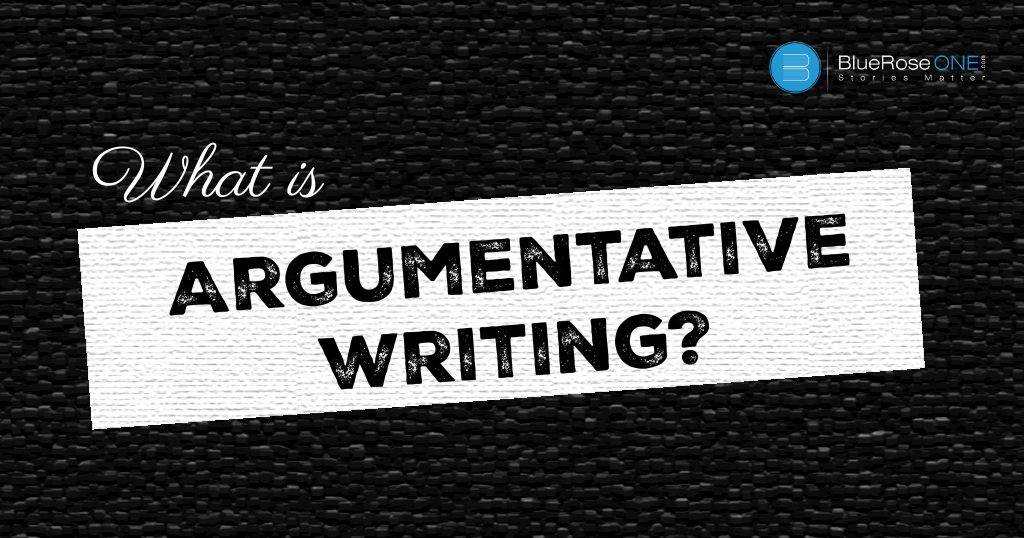
What is Argumentative writing? Justify Your Point!
Argumentative writing is a powerful form of communication that goes beyond expressing opinions; it is the art of persuading others to see your point of view. In a world inundated with information, the ability to craft a compelling argument is a skill that can set you apart. In this blog post, we will delve into the nuances of argumentative writing, exploring its definition, components, and essential techniques to justify and strengthen your point effectively. Understanding what is argumentative writing: Argumentative writing is a genre of writing that aims to persuade the reader to accept or agree with a particular point of view. It involves presenting a coherent and logical argument supported by evidence, facts, and examples. Unlike informative or descriptive writing, argumentative writing is dynamic, engaging the reader in a thought-provoking dialogue. You may also like: Literary Elements: A Complete List of Powerful Literary Devices Components of an Argumentative Essay: Introduction:The introduction is the reader’s first experience with your argumentative essay, therefore it’s critical for creating the tone and catching attention. Begin with an intriguing hook, such as a thought-provoking question, a pertinent quotation, or an unexpected fact.This immediately interests the reader and pushes them to go further into your argument. Provide background information to contextualize your topic, including a quick description of the situation at hand. Finally, end the introduction with a precise thesis statement that summarizes your major point.For example: In the bustling world of technology, where innovation shapes our daily lives, the question of privacy looms large. As we embrace the convenience of smart devices, the trade-off between technological advancements and personal privacy becomes increasingly pronounced. Argumentative essay explores the delicate balance between technological progress and individual privacy, contending that safeguarding the latter is paramount in a digitised society. Thesis Statement:The thesis statement is the foundation of your argumentative essay, articulating your position and directing the reader through your essay. It ought to be detailed, arguable, and brief. A solid thesis serves as a road map, giving the reader with a clear path to follow. In the aforementioned scenario,This essay contends that safeguarding individual privacy is paramount in a digitised society as we grapple with the ethical implications of technological progress. By analysing the tension between innovation and privacy, we can navigate a path that ensures both technological advancements and personal freedoms coexist harmoniously. Body Paragraphs:Each body paragraph should focus on a specific point that supports your thesis. Start with a topic sentence that introduces the main idea of the paragraph. Follow this with evidence, examples, and analysis to strengthen your argument. Ensure a logical flow between paragraphs to maintain coherence.For instance: The first body paragraph delves into the invasive nature of data collection by tech companies. With examples like targeted advertisements based on user behaviour, it illustrates how personal information is commodified, raising concerns about consent and the ethical implications of such practices. Counterarguments:Acknowledging opposing viewpoints adds depth to your argumentative essay and showcases a nuanced understanding of the topic. Address counterarguments and refute them with strong evidence. This enhances the credibility of your position.For example: While some argue that sacrificing privacy is a necessary trade-off for technological conveniences, this essay recognises these perspectives. However, a closer examination reveals that prioritising individual privacy not only respects fundamental rights but also encourages responsible technological innovation. Conclusion:The conclusion summarises the main points, restates the thesis, and leaves the reader with a compelling closing thought. Reinforce the significance of your argument, leaving a lasting impression.In the privacy and technology example: As we navigate the ever-evolving landscape of technology, the preservation of individual privacy stands as a beacon guiding ethical innovation. By prioritising privacy, we ensure a future where technological progress enriches our lives without compromising our fundamental rights. It is a delicate dance, but one that must be choreographed with precision to secure a harmonious coexistence between innovation and individual freedom. You may also like: How to Publish a Book? | Publish Your Book | BlueRoseOne Best Techniques for Effective Argumentation Writing: Research and Evidence:A well-researched argument writing is the backbone of persuasive writing. Citing credible sources, statistics, and examples not only bolsters your claims but also showcases the depth of your understanding of the topic. For instance, if you’re arguing in favour of renewable energy, you might cite studies from reputable institutions like the International Energy Agency or provide statistics on the increasing adoption of solar and wind power globally. This not only adds authority to your argumentative essay but also invites readers to trust your perspective based on solid evidence. Logical Reasoning:Building a logical structure for your argumentative writing is essential for its coherence and persuasiveness. Ensure a clear and seamless progression of ideas, guiding the reader through a well-organised thought process. For instance, if your argumentative essay revolves around the benefits of a healthy lifestyle, logically present arguments starting from the impact on individual well-being to broader societal benefits. A logical structure makes it easier for readers to follow your reasoning, reinforcing the overall strength of your argumentative essay. Emotional Appeal:While logic is crucial, emotions can deeply resonate with readers and enhance the persuasiveness of your argument. Share relatable stories or personal anecdotes to connect with your audience on a human level. For example, when arguing for stricter environmental regulations, recounting personal experiences of witnessing the impact of pollution on communities can evoke empathy. By appealing to emotions, you make your argumentative essay more memorable and compelling, fostering a stronger connection with your audience. Clarity and Conciseness:Avoiding ambiguity and verbosity is essential for effective communication. Present your ideas in a clear and concise manner, ensuring that your argument is easily understood. For instance, if you’re arguing for educational reforms, clearly outline the key issues and proposed solutions without unnecessary jargon. A well-articulated argument not only facilitates understanding but also increases the likelihood of your message being accepted by the reader. Tone and Style:Consider your audience when choosing the tone and style of your argumentative essay. Striking a balance between formality and relatability is crucial. For instance, if addressing a professional audience…
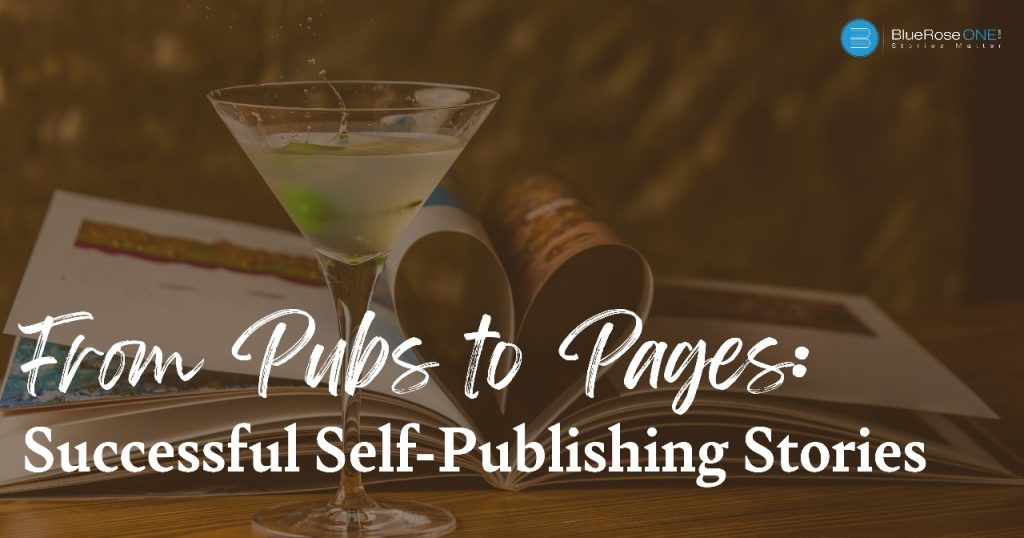
Self-Publishing successful stories: From Pubs to Pages
In an era where aspiring authors no longer rely entirely on traditional publishing methods, self-publishing has emerged as an exciting new way for writers to share their stories with the world. This blog, “From Pubs to Pages,” explores the interesting world of successful self-publishing stories. We’ll go on a tour through the lives of authors who seized ownership of their stories, tried self-publishing, and achieved incredible success. From overcoming obstacles to revolutionising the publishing landscape, these stories highlight the numerous and inspiring roads that lead from self-publishing to literary success. The Rise of Self-Publishing Self-publishing has experienced a transformation, moving from a perceived last resort to a preferred option for many authors. The rise of digital platforms, increased accessibility, and changes in reader tastes have all led to the democratisation of publishing. As we investigate successful self-publishing stories, it is critical to acknowledge the empowering character of this channel, which allows authors to forge their own paths to success. You may also like: Top 10 Best Biographies of All Time 1.Hugh Howey: The Beacon of Self-Publishing Success Hugh Howey’s journey from yacht skipper to literary celebrity is an encouraging story of self-publishing success. Howey’s success came with his dystopian science fiction trilogy “Wool.” Unconvinced by traditional publication, Howey began self-publishing his work on Amazon’s Kindle Direct publication programme. The series became extremely popular, attracting a large following and traditional publishers who took note. Eventually, Howey signed a hybrid publishing arrangement while keeping the digital rights, demonstrating the potential for a mutually beneficial connection between self-publishing and established methods. Howey’s success highlights the power of leveraging digital platforms and maintaining control over one’s work. His journey illustrates the potential for self-published authors to not only achieve recognition but also negotiate favourable deals in the evolving landscape of publishing. 2.Amanda Hocking: From Blogger to Bestseller Amanda Hocking’s self-publishing journey began on a personal blog before evolving into a prolific career as a best-selling author. Dissatisfied with traditional rejection, Hocking turned to self-publishing her young adult paranormal novels, starting with the “Trylle Trilogy.” Her stories resonated with readers, and Hocking quickly became a self-publishing phenomenon, earning millions in book sales. Hocking’s story underscores the democratising nature of self-publishing, allowing writers to connect directly with their audience. Her success challenges the notion that self-published works lack quality or marketability, proving that engaging storytelling can thrive regardless of the publishing path chosen. 3.Richard Ahenkorah: A Corporate Trainer to Literary Architect Richard Kwarteng Ahenkorah’s career as a self-published author demonstrates his dedication to leadership development and empowerment. With a background as a seasoned corporate trainer and inspirational speaker, Richard set out on a quest to share his wealth of knowledge and insights with a larger audience. Richard’s decision to self-publish demonstrates his confidence in the value of accessible knowledge. By avoiding traditional publication channels, he ensures that his themes of hope, the future, and leadership development reach a global audience directly. As a corporate trainer dedicated to educating leaders for higher positions, Richard Kwarteng Ahenkorah’s excursion into self-publishing expands his reach and leaves an unmistakable impression on the landscape of leadership books. You may also like: Insights from Bestselling Authors: The Art of Storytelling The Keys to Successful Self-Publishing As we dissect the stories of Howey, Hocking, and Ahenkorah, certain key principles emerge that contributed to their self-publishing triumphs. These principles serve as valuable guideposts for aspiring authors considering the self-publishing route. You may also like: The Rise of Self-Publishing and What it means for authors The Future Landscape of Self-Publishing As the success stories of Howey, Hocking, and Ahenkorah illustrate, self-publishing has evolved from a niche avenue to a viable and respected path for authors. The future landscape of self-publishing holds exciting possibilities, driven by technological advancements, changing reader habits, and a growing acceptance of diverse publishing models. You may also like: The importance of Professional Editing in Self Publishing Conclusion “Explore self-publishing success with ‘From Pubs to Pages,’ learning from Howey, Hocking, and Ahenkorah. Navigate evolving landscapes using timeless principles like quality content, market awareness, engagement, adaptability, and resilience. Self-published authors, driven by creative control, rejection of gatekeeping, or inclusivity, contribute vibrancy to storytelling. The future holds exciting opportunities for authors to shape narratives and connect globally.”
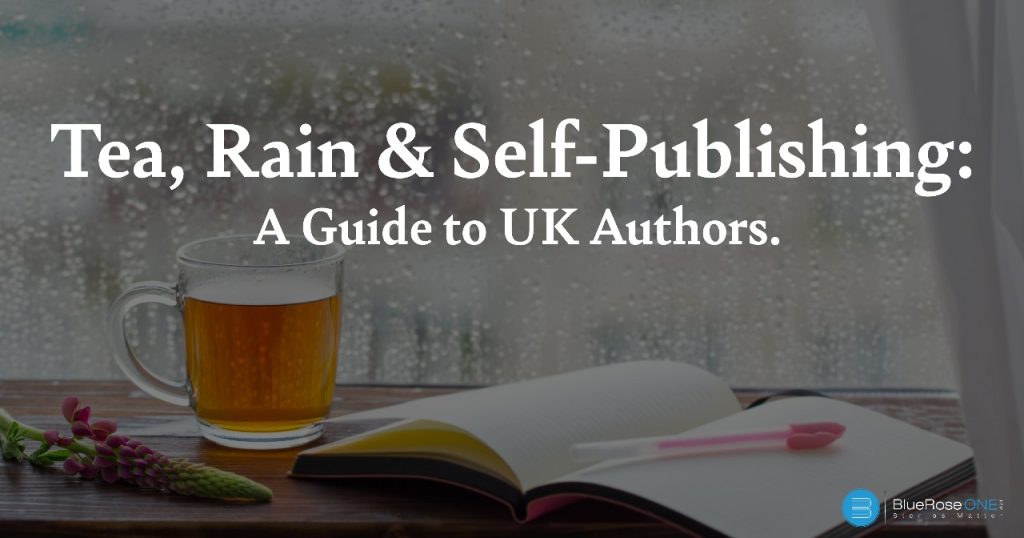
Tea, Rain & Self-Publishing: A Guide to UK Authors
The advent of self-publishing has revolutionised the publishing scene, giving authors more freedom to share their stories. For UK authors navigating the complex world of self-publishing, this thorough guide seeks to illuminate the process from start to finish. As we embark on this trip, we’ll look at the rewards, challenges, and practical processes that enable UK authors to self-publish their literary works. The Rise of Self-Publishing in the UK Traditionally, authors seeking publication faced the difficult job of finding a literary agency or attracting the attention of major publishing organisations. However, the rise of self-publishing has democratised the field, giving authors an additional way to reach audiences. This transition has been especially noticeable in the United Kingdom, where an increasing number of authors are opting to self-publish in order to retain creative control and reach a wider audience. You may also like: Top 10 Best Biographies of All Time 2. Challenges and Considerations You may also like: The Rise of Self-Publishing and What it means for Authors 3. Practical Steps in Self-Publising: You may also like: Insights from Bestselling Authors: The art of storytelling Conclusion Self-publishing empowers UK authors to share their tales, engage with readers, and establish themselves as literary voices. While there are hurdles, the benefits of creative freedom, worldwide exposure, and possible financial returns make self-publishing a viable alternative. With a thorough understanding of the self-publishing process—from manuscript development to marketing strategies—UK authors can embark on a rewarding journey of literary independence. In a world full with various voices and tales, self-publishing stands out as a beacon of empowerment, allowing UK authors to add their own distinctive thread to the rich tapestry of global literature.
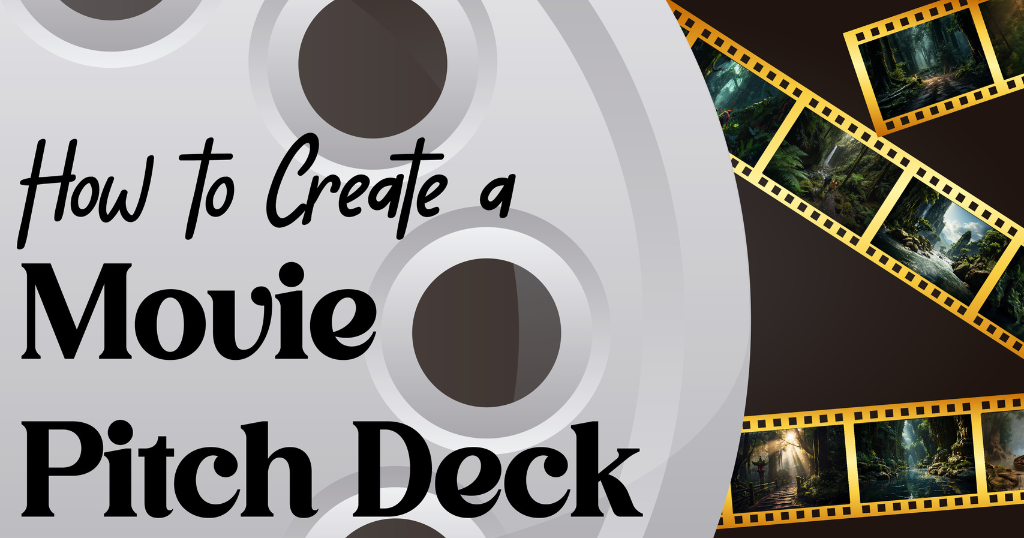
How to create a movie pitch deck of books?
In the dynamic world of filmmaking, where ideas are the currency of creativity, adapting books into movies has become an increasingly popular trend. This intersection of literature and cinema allows filmmakers to tap into captivating narratives, well-developed characters, and established fan bases. However, the journey from a beloved book to a compelling movie requires careful navigation. One essential tool in this process is the movie pitch deck, a comprehensive document that captures the essence of the book and communicates its cinematic potential. In this blog post, we will unravel the art of creating a movie pitch deck for books, providing aspiring filmmakers and producers with a roadmap to transform literary treasures into cinematic gems. Understanding the book Before delving into the intricacies of creating a movie pitch deck, it is crucial to thoroughly understand the source material—the book. Whether it’s a classic novel or a contemporary bestseller, the nuances of the narrative, character arcs, and thematic elements must be grasped. Take note of the tone, atmosphere, and unique elements that make the book special. This deep understanding will be the cornerstone of your pitch deck, guiding every decision throughout the adaptation process. Identifying cinematic potential Not every book is automatically suited for the big screen. A critical aspect of crafting a successful movie pitch deck is identifying the cinematic potential within the source material. Consider the visual elements that can be translated effectively: compelling settings, vivid characters, and dramatic plot points. Evaluate the book’s storytelling structure and determine if it lends itself well to a cinematic narrative. This assessment will guide your pitch deck towards highlighting the aspects that make the story inherently cinematic. Structuring the Movie Pitch Deck A well-structured movie pitch deck is the key to grabbing the attention of potential investors, producers, and collaborators. While there is no one-size-fits-all template, a comprehensive pitch deck typically includes the following sections: Introduction:In the introduction section of a movie pitch deck for a book adaptation, it is crucial to provide a compelling overview of the book, its author, and its significance in the literary world. Begin by introducing the author, detailing their background, style, and notable works. For instance, if the book is a bestseller or has won prestigious awards, this is the place to mention it. Emphasise the author’s influence on literature and any dedicated fan base they may have.Example: “Jane Doe, a celebrated author known for her evocative storytelling, penned the gripping novel ‘Shadows of Eternity.’ With a writing style that seamlessly blends suspense and introspection, Doe has amassed a dedicated fan base globally. ‘Shadows of Eternity’ has not only garnered critical acclaim but has also been honoured with the prestigious XYZ Literary Award, solidifying its significance in contemporary literature.” Synopsis:The synopsis is the heart of the movie pitch deck, providing a concise yet enticing overview of the story. Focus on the main plot points and central conflicts, ensuring to highlight the universal themes that make the narrative relatable to a broad audience. Dive into the emotional core of the story, giving potential collaborators a taste of the emotional journey the audience will embark upon.Example: “‘Shadows of Eternity’ follows the tumultuous journey of Emily, a young artist who discovers an ancient artefact that unravels a hidden realm. As she grapples with the responsibility bestowed upon her, Emily must navigate a world of deceit, betrayal, and self-discovery. The central conflict revolves around the battle between light and darkness, echoing universal themes of resilience, redemption, and the enduring human spirit.” Visual Elements:Incorporating visuals into the movie pitch deck is essential to conveying the essence of the book visually. Utilise concept art, mood boards, or carefully selected images representing key scenes. These visuals should not only capture the aesthetic of the story but also showcase the potential for stunning cinematography, enticing potential collaborators with the prospect of a visually striking film.Example: “Visual elements in ‘Shadows of Eternity’ are designed to transport audiences into a mesmerising world where ancient ruins intertwine with modern cityscapes. Concept art depicting the juxtaposition of light and shadow, along with mood boards illustrating the rich palette of emotions, promises a cinematic experience that is as visually captivating as it is narratively compelling.” Character Profiles:Introduce the main characters in a way that goes beyond their surface-level traits. Briefly describe their roles in the story, highlighting the complexities that make them compelling. Emphasise character arcs and development, focusing on elements that would translate well to the cinematic medium.Example: “Meet Emily, the resilient protagonist of ‘Shadows of Eternity,’ whose artistic journey mirrors her personal growth. As she grapples with the weight of her newfound destiny, her transformation becomes a poignant exploration of inner strength and courage. Supporting characters, such as the enigmatic guide and the formidable antagonist, add layers to the narrative, promising a cinematic ensemble that will resonate with audiences.” Market Analysis:Conducting a thorough market analysis is a crucial step in showcasing the potential audience for the movie adaptation. This involves understanding the demographics, preferences, and size of the target audience. For example, if the book falls within the young adult fantasy genre, it’s essential to identify the age group that predominantly consumes such content. Utilising market research data, surveys, and social media analytics can help in defining the potential audience.Additionally, identifying similar successful adaptations provides tangible evidence of the market’s appetite for such content. For instance, if the book falls into the fantasy genre, citing the success of the “Harry Potter” or “The Lord of the Rings” film franchises would strengthen the case. By showcasing box office performances, it becomes evident that there is a proven demand for this type of content, increasing its appeal to potential investors and distributors. Budget Overview:Providing a comprehensive budget overview is essential for transparency and planning. This involves estimating the budget required for various aspects of the adaptation, including pre-production, production, post-production, marketing, and distribution. For example, if the adaptation involves elaborate set designs or visual effects, these aspects should be reflected in the budget breakdown.A major expense breakdown is crucial…
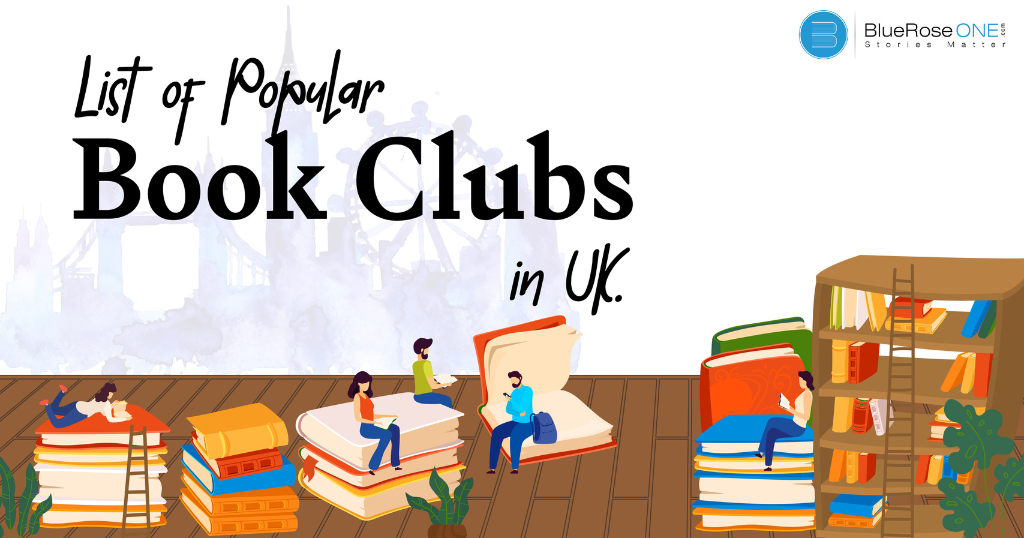
Top 10 Book Clubs in the UK That You Must Join in 2024
Book clubs in UK are steady pillars of community participation, creating a common love of literature in a world where internet connections are the norm. With its extensive literary history, the UK is home to a plethora of book clubs that appeal to a wide range of interests. We’ll explore the colourful fabric of well-liked book clubs throughout the UK in this guide, giving readers access to a carefully selected selection of events that commemorate the love of reading. Read: A Complete list of popular book libraries in the UK that you must visit in 2024 Here is a list of the top book clubs in the UK 2024 that you absolutely must join if you’re someone who literally smells the pages of books, consumes books, or is caught with one on your face while you’re sleeping: The Literary Lounge Book Club The Silent Book Club The Feminist Book Club Daunt Books Publishing Group The Pigeonhole Book Club The Literary and Philosophical Society Book Group The Black Girls Book Club The Glasgow Science, Fiction, and Fantasy Book Club The Willoughby Book Club The Agatha Christie Book Club 1. The Literary Lounge Book Club The Literary Lounge Book Club is a haven for book lovers, tucked away in the heart of London’s literary scene. This prestigious club is a refuge where members can enjoy a friendly environment and get lost in stimulating conversations. The Literary Lounge is unique in that it favours a variety of genres, making sure that its patrons get a well-rounded literary experience. The club’s dedication to accepting both modern and classic books enhances the diversity of its reading choices, appealing to a wide range of literary preferences. One of The Literary Lounge’s main commitments to building a thriving reading community is holding regular gatherings. Members get the chance to contribute their opinions, observations, and insights about the chosen works at these get-togethers. The club’s commitment to delving into a range of issues guarantees that every gathering offers a novel viewpoint and keeps the literary conversation lively. The Literary Lounge Book Club offers a space for readers in the heart of London to interact, exchange, and celebrate the wide world of literature—whether they are immersed in the timeless classics or the newest literary discoveries. You may also read: List of Nobel Prize Winners in India (Updated) Book Clubs in Delhi 2. The Silent Book Club With its distinctive approach that meets the needs of those who find comfort in reading in quiet company, The Silent Book Club reimagines the conventional book club experience. This group, which has locations around the UK, including thriving cities like Manchester and Edinburgh, welcomes members to bring books they are currently reading and participate in an hour-long silent reading session. One unique aspect that distinguishes The Silent Book Club from traditional book clubs is this silent intermission, which provides a calm and reflective setting for personal literary discovery. After the pause, the mood shifts to one of group sharing. Participants are given the chance to break their silence and strike up discussions in which they can exchange ideas, suggestions, and literary finds. This well-balanced combination of reading alone and the ensuing socialising produces a distinctive and welcoming literary experience. Thanks to its creative approach, the Silent Book Club not only respects the wide range of reading tastes among its members, but it also helps people who enjoy books get to know one another better. This club offers bookworms a safe refuge where they may congregate and enjoy the quiet pleasure of reading with like-minded people in cities all around the UK. You may also like: Top 10 Best Biographies of All Time Book Clubs in the UK 3. The Feminist Book Club The Feminist Book Club shines as a symbol of empowerment and inclusivity, establishing a crucial forum for literary analysis from a feminist perspective. This vibrant club welcomes members from all around the United Kingdom and operates both online and in person. Its dedication to supporting feminist writing extends beyond the book’s pages, encouraging thought-provoking discussions that explore the subtleties of gender, equality, and empowerment. The Feminist Book Club’s carefully chosen reading list, which includes both modern studies that represent the field’s changing terrain and classic feminist works that helped establish gender discourse, is what makes it unique. Members converse in ways that go beyond traditional book discussions, exploring cultural influences, societal conventions, and introspective thoughts sparked by the selected works. This group serves as a forum for people who are enthusiastic about feminist literature to interact, exchange viewpoints, and deepen their awareness of gender-related topics. It also serves as a stimulus for intellectual progress. You may also like: The Rise of Shakti by Megha Dinesh: Book Review You may also read: 100+ Adjectives That Start With N (With Examples & Definitions) Book Clubs in the UK 4. Daunt Books Publishing Group Tucked away in the centre of Marylebone, the flagship Daunt Books store is a literary haven for bookworms, and its book club, the Daunt Books Publishing Group, is modelled around this intellectual utopia. This esteemed group meets once a month and welcomes participants into a world of well-chosen books that cut across borders. The club is unique in that it offers a literary journey that mirrors the wide range of interests and cultural backgrounds of its members due to its dedication to worldwide literature. The immersive nature of Daunt Books Publishing Group’s book discussions sets it apart. In addition to reading the chosen books, members get to talk with the authors when they are published. These conversations offer distinctive perspectives on the writing process, the sources of inspiration for the pieces, and the larger literary canon. A distinctive reading community where members can discover the world via the pages of well-selected books is fostered by the club’s commitment to embracing the richness of global literature and transcending national boundaries. This club transforms into a crossroads of cultures in the heart of Marylebone, encouraging readers to go on an infinite literary adventure. You may…

